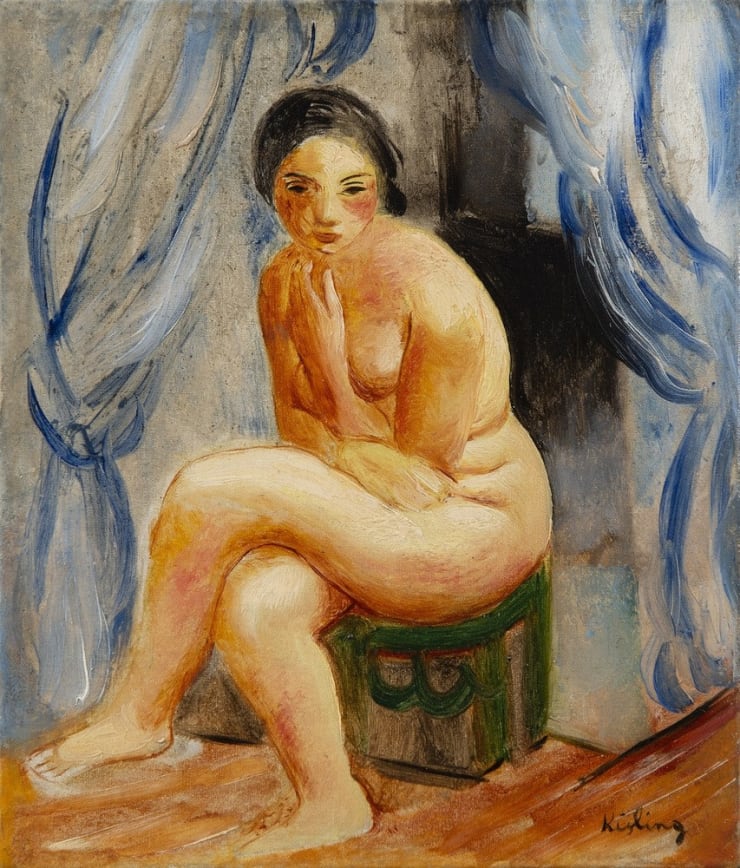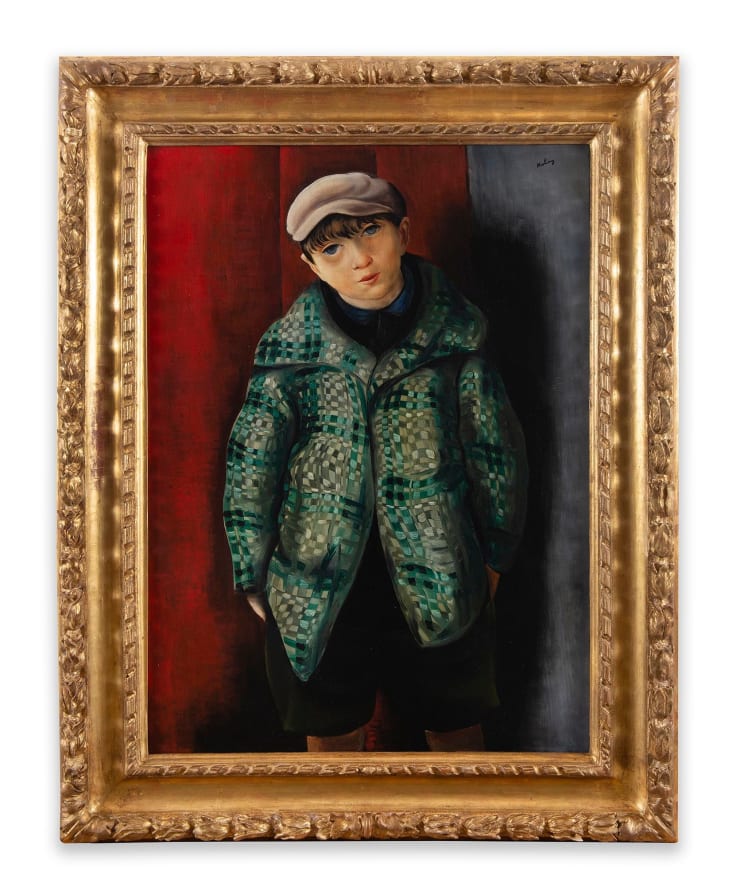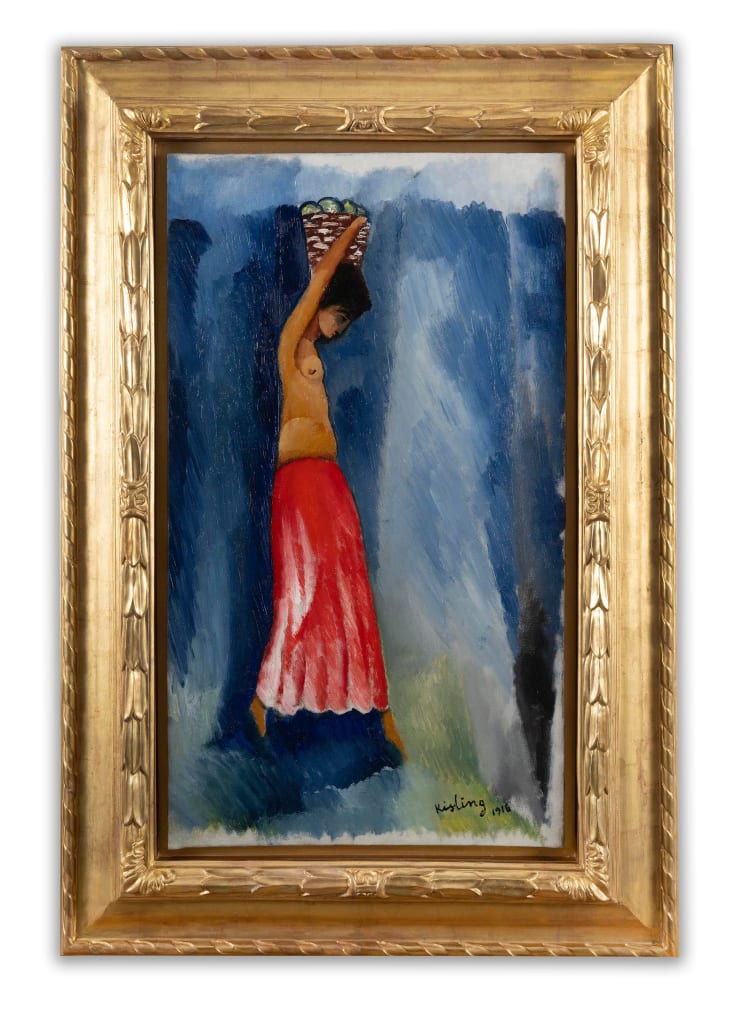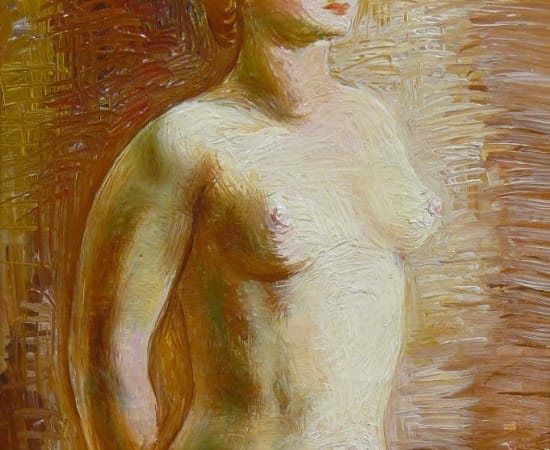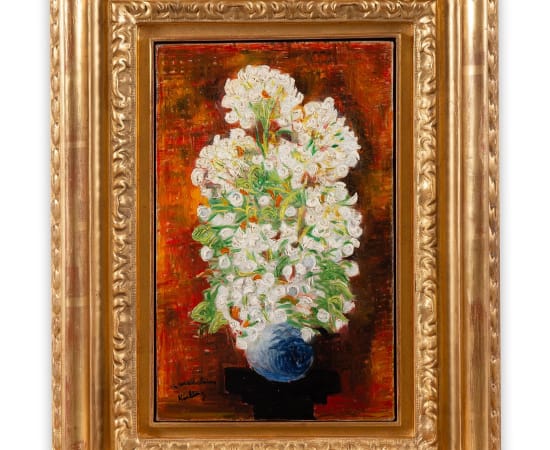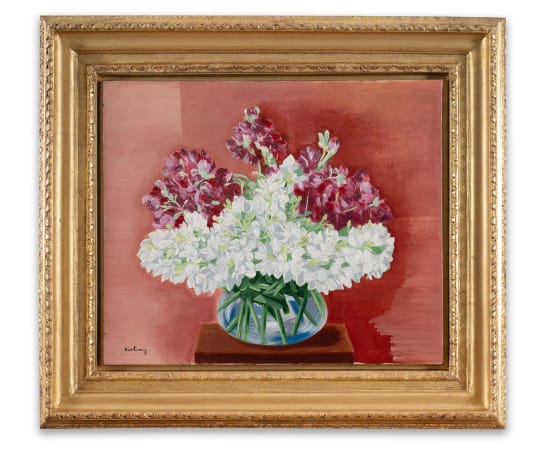Moïse Kisling (1891-1953) Polish
Works
Biography
Moïse Kisling occupies a distinctive place within the vibrant landscape of 20th-century European art—a painter of refined sensuality and quiet intensity, whose works bridged the poetic intimacy of the School of Paris with a deeply personal vision. Born in Kraków, Poland, Kisling arrived in Paris in 1910, quickly embedding himself in the legendary Montparnasse circle alongside Modigliani, Soutine, and Utrillo. Though surrounded by turbulence and transformation, Kisling’s work remained grounded in a lyricism that spoke to beauty, form, and emotional resonance.
Kisling's portraits—perhaps his most iconic contribution—reveal his remarkable ability to merge stylized elegance with psychological depth. With almond-shaped eyes, poised expressions, and a palette that moves gracefully between restraint and richness, his sitters become timeless figures, suspended between realism and reverie. Whether painting a silent muse or a vase of blooms, Kisling maintained a meticulous balance between structure and softness, between decorative flair and formal control.
While rooted in figuration, his practice evolved in dialogue with the currents of modernism. Influences of Fauvism, Cubism, and Expressionism can be felt in his work, yet always filtered through his own lyrical sensibility. Kisling’s output spans genres—landscapes, nudes, still lifes—but it is unified by a clarity of vision and an unwavering commitment to the visual harmony of his compositions.
Kisling was widely exhibited in his lifetime, both in France and internationally, and his works now reside in major collections, including the Musée d’Art Moderne de Paris, the Tel Aviv Museum of Art, and The Metropolitan Museum of Art in New York.
At Bailly Gallery, where the poetic, the refined, and the historically resonant converge, Kisling’s works find their natural context. His canvases evoke an era, a spirit, and an artistic identity that speak directly to the gallery’s ethos: celebrating the timeless allure of artists who shaped modernity not through rupture, but through grace, balance, and unmistakable style.
Kisling's portraits—perhaps his most iconic contribution—reveal his remarkable ability to merge stylized elegance with psychological depth. With almond-shaped eyes, poised expressions, and a palette that moves gracefully between restraint and richness, his sitters become timeless figures, suspended between realism and reverie. Whether painting a silent muse or a vase of blooms, Kisling maintained a meticulous balance between structure and softness, between decorative flair and formal control.
While rooted in figuration, his practice evolved in dialogue with the currents of modernism. Influences of Fauvism, Cubism, and Expressionism can be felt in his work, yet always filtered through his own lyrical sensibility. Kisling’s output spans genres—landscapes, nudes, still lifes—but it is unified by a clarity of vision and an unwavering commitment to the visual harmony of his compositions.
Kisling was widely exhibited in his lifetime, both in France and internationally, and his works now reside in major collections, including the Musée d’Art Moderne de Paris, the Tel Aviv Museum of Art, and The Metropolitan Museum of Art in New York.
At Bailly Gallery, where the poetic, the refined, and the historically resonant converge, Kisling’s works find their natural context. His canvases evoke an era, a spirit, and an artistic identity that speak directly to the gallery’s ethos: celebrating the timeless allure of artists who shaped modernity not through rupture, but through grace, balance, and unmistakable style.
Enquire
